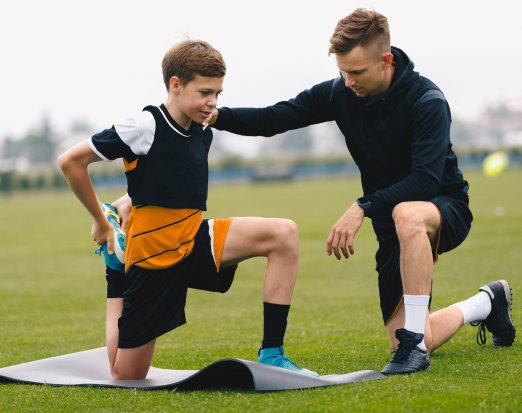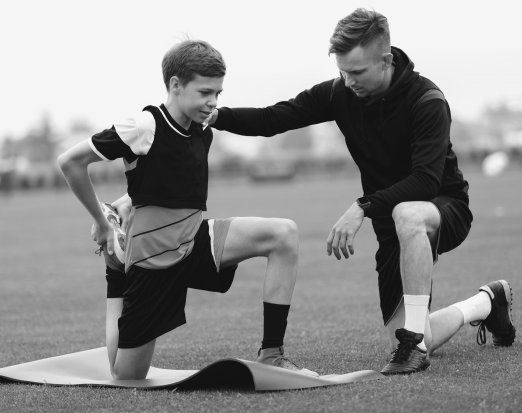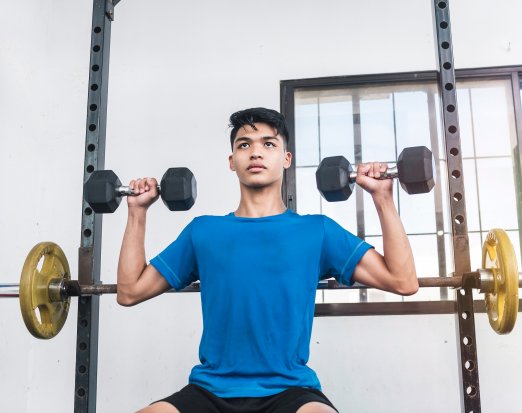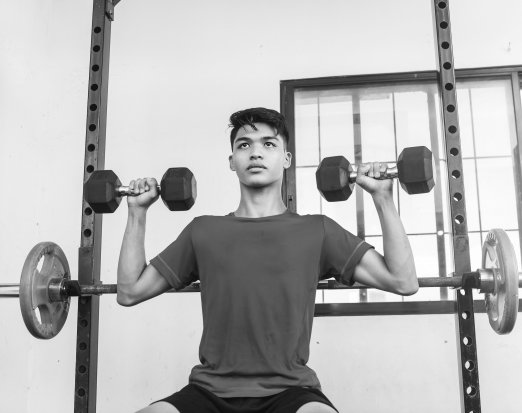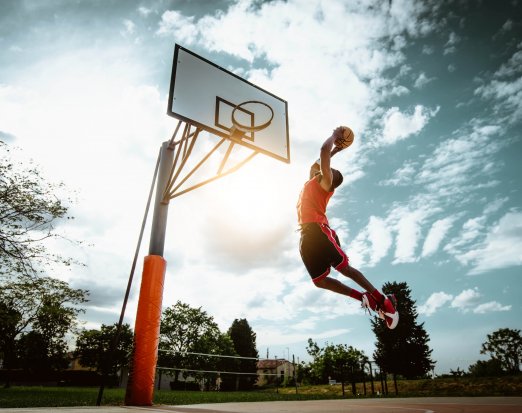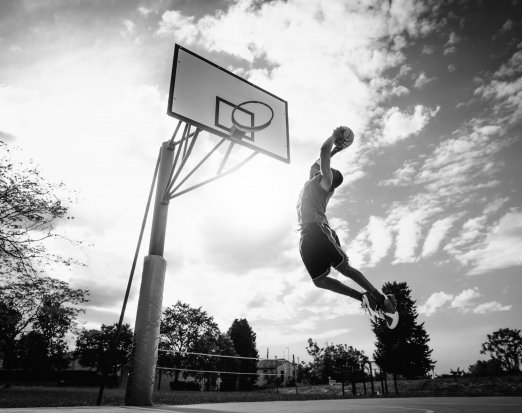Train Movements Not Muscles for Athletic Development & Sport Preparation
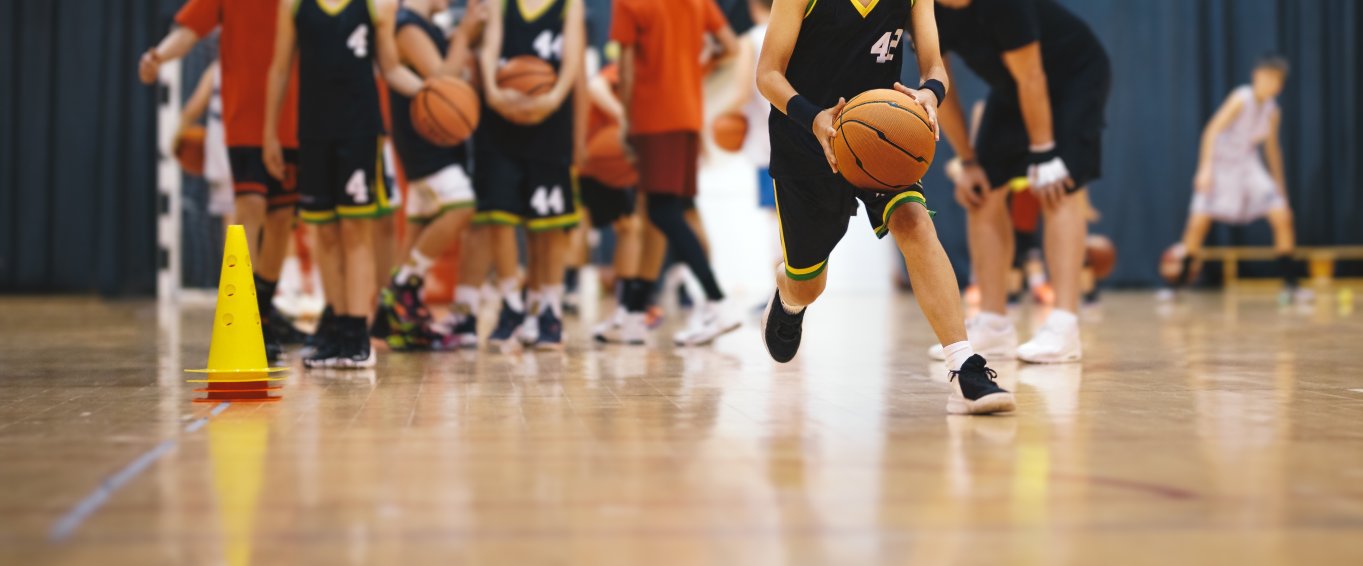
Generally, when people think about training, especially resistance or strength training, they often think of training their major muscles or muscle groups, for example the quadriceps, hamstrings, or their biceps. Furthermore, many people use muscles or muscle groups when creating their strength training programme, as this is a general recommendation (7).
Typically, the idea here is to select exercises that recruitment the main muscles or muscle groups (quadriceps, hamstrings, deltoids, trapezius, etc) - sometimes known as the prime movers. Performing a set number of repetitions/sets at a specific percentage of their 1-rep max, will overload the musculature (stimulus) leading to a range of nervous system and muscular adaptations. Moreover, as the individual develops greater levels of strength and fitness, their training programme might even evolve and be subdivided into muscle groups on a specific day. i.e. – legs on Monday. Back and arms on Wednesday – often referred to as split training. Many bodybuilding individuals clearly use this approach in their training, as they need to complete a tremendous amount of training volume, as higher volume (repetitions x sets) is associated with better hypertrophy outcomes (4, 10, 12). However, regarding youth and athletic development, with aims to improve sport preparation, performance, and reduce the risk of injury, clearly, we are not training bodybuilders, thus we need to consider a different concept in training, especially, for strength training.
As previously mentioned in the sport-specific training blog, exercise selection and possible adaptations can be placed onto a spectrum, with physical capacities at one end, and skills at the opposite end. Sport skills are completely dependent to the environment and task, so should be considered as technical sport practice. To differentiate further between the two extremes, exercises that can be easily overloaded via resistance/external load, for example, front or back squat, will generally improve physical capacities i.e., maximal strength. Exercises that cannot be overloaded to the same extent via external load, for example, hops, skips, and jumps, are frequently progressed through speed and/or complexity and are associated with more skill-based adaptations i.e. coordination.
This is an important concept to understand for any coach working with youth athletes, especially when designing a strength and conditioning programme. Many youth athletes have a low strength and conditioning training age, regardless of their sport, so can be viewed as untrained. It is well known that untrained individuals may not be able recruit their muscles/muscle fibres to the same extent as trained individuals (5), hence a difference in strength (force production) between untrained and trained. Moreover, it is widely accepted (indirectly), that many of the early changes of regular strength training is through alterations in neuromuscular function, especially in youths (6, 13).
It is essential to appreciate the importance of these neuromuscular function, as changes in the neuromuscular system are strongly associated with coordination and motor control/motor learning. Furthermore, developing muscular coordination in all ages is linked with reducing injury risks (3, 9), this may also explain the effectiveness of specific warm up programmes and their success in reducing injuries, particularly lower limb and knee injuries (injury reduction by ~46%) (11). Thus, an effective training programme for youth athletes will drive neuromuscular adaptations, which can be subdivided into inter-muscular coordination and intra-muscular coordination.
Inter-Muscular Coordination & Intra-Muscular Coordination
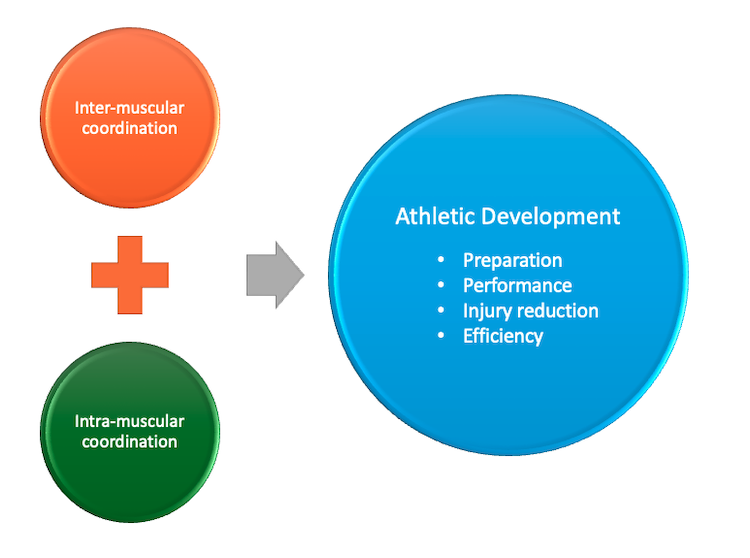
Through regular strength training, either with exercises that can be easily loaded (capacity -type exercises – back and front squat) or skill-based exercises (drills that are loaded less externally but use speed and coordination – jump squats or box jumps) the system will experience a spectrum of neurological adaptations – coined, Inter-muscular coordination or Intra-muscular coordination. Generally, inter-muscular coordination has been linked with an increase in neural activation of the major muscles (prime movers) involved with the exercise or task, a decrease or inhibition of the opposing muscles (antagonist contraction) or co-contraction, as this has a key role in learning movements (2), and better assistance from synergistic muscles. In other words, the nervous system seems to learn and develop an effective recruitment and integration of the key musculature (like a conductor selecting the right instrument to play) to complete the exercise or task – this is also speculated to be highly important in sport training and competition. On the other hand, intra-muscular coordination is associated at the local muscle level. These changes include, increase motor unit recruitment, changes in synchronisation and reflex patterns, and potentially altered pre-activation to aid in stiffness when using the stretch-shortening cycle - plyometric type drills (14).
The interaction between inter-muscular coordination and intra-muscular coordination is not completely understood. Clearly, any exercise, drill or movement will drive both inter-muscular coordination and intra-muscular coordination adaptations. However, it is generally recognised that inter-muscular coordination is associated with better movement and motor control. Intra-muscular coordination is probably less of a factor in movement and motor control but plays a major role in efficiency and feedback mechanisms. Therefore, exposing youths to exercises and drills that require muscles to work together, rather than just focusing on the muscle, global (inter-intra) coordination and motor control can be developed – hence we focus on movements not muscles.
| Neuromuscular Adaptations | Associated Changes in the Neuromuscular System |
| Inter-muscular coordination | This is associated with changes in the nervous system to muscles or group of muscles Improvement in prime mover recruitment A decrease in opposing muscle recruitment Changes in synergist – muscles that assist the prime movers |
| Intra-muscular coordination | This is associated with nervous system changes at the local muscle site Enhanced motor unit recruitment Changes in firing frequencies (rate coding) Changes in synchronization Changes in muscular reflexes Pre-activation – stiffness to aid in the stretch-shortening cycle |
Youth Development is Motor Learning. Our App Empowers Training & Practice
Regular training, especially strength training, offers youth athletes an excellent opportunity to learn and play with their motor learning and physical development, for example, squats, deadlifts, lunges, presses, and pull ups. In each exercise the youths learn to organise their body effectively, and through constant and regular practice their technique (inter-muscular coordination) will improve; remember that muscle coordination is strongly associated with motor learning (1).
It is important to allow the youth athletes to practice and learn their movements (motor learning) at their own pace, as this forms a major part of their physical development. Moreover, as many of the exercises and drills will be new to the athlete, coaches should consider using an implicit learning/coaching practice (8). Implicit learning has shown to be more athlete focused, as the athletes can figure out, through practice, how to complete the task or movement. This self-learning builds more quality and stable movements, especially when performing in more high-pressure situations/environments. Coaches should be mindful of explicit coaching/learning – especially with the overuse of complicated coaching points or cues, which may imply that there’s a correct way to move, as this method of coaching may constrain the athlete’s potential and remove their motor learning – their body, the environment, and the task/goal. Remember that implicit learning is associated with – visual and listening, touch and feel – sensory input, which may be valuable in building coordination.
This is where technology and our app are extremely powerful, as our app has been created to empower youth athletes to learn new skills and modes of training. Using the app the athletes can watch new exercises and drills and practice at their own pace. With technology, they can even video themselves and watch back to reflect and consider their own performance and development. Furthermore, the athletes can track their progress, upload personal best scores and note writing in the training journal; this reflective practice can aid in self-efficacy, motivation and self-confidence.
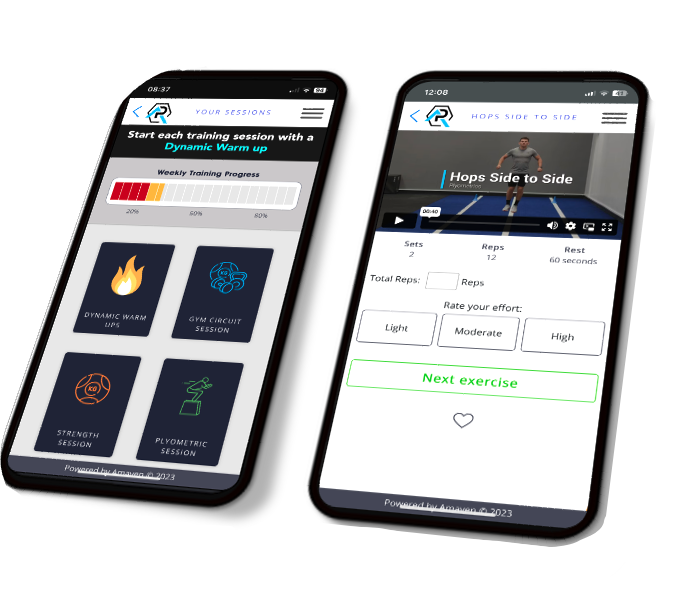
Summary
Regular training that includes both strength training (physical capacities) and skill-based drills (plyometrics, skips, hops, jumps, and sprints) have many benefits, especially for youths, including sport preparation and performance, and injury reduction. Many of these outcomes are associated with improved motor learning and coordination. It is essential that when designing a training programme for youths, the programme is appropriate for their learning and physical development. it is not necessary to design a strength training programme by muscles, as working muscles in isolation, for example, the leg extension or leg curl could have negative implications in both their learning (muscle coordination) and physical development. Furthermore, youths are clearly not bodybuilding so training volume can be kept to a minimal amount. The intensity/effort is more important than training volume so training sessions can be kept short. This should be seen as a positive for both the athlete and coach, as small amounts of training (~20 - 30 minutes, 2 times a week) can be a great start and lead to significant improvements.
Exercise selection should be based on a specific movement, where the youths can focus on the task/goal and not their muscles. Exercises can simply be classified as strength, plyometrics, or sprint drills. Strength exercises can be viewed as lower or upper body, but again, this may be unnecessary, as any multi-joint exercise for example, the squat, overhead press or chin up is a complex stimulus for the body, especially for the nervous system in trying to organise the musculature. Exposing athletes to a range of training, drills, and exercises that target either their physical capacities – higher level of overload and generally slower movements, or faster, dynamic movements, for example hops, skips, jumps, sprints, cutting – will develop both inter-muscular coordination and intra-muscular coordination. By regularly completing these exercises/drills, monitoring their training (load, speed, time), reflecting on their performance, and perhaps ‘playing’ with their movement strategies this will develop self-confidence and intrinsic motivation in their training and long-term development, and most importantly reduce the risk of injury.
Youth Strength & Conditioning Platform for Schools, Sport Clubs, and Academies.
Our platform helps to deliver effective training and tracks athletic progress and development, with the core objectives of reducing the risk of injuries and to promote both sport readiness and performance. The platform’s features include
- Strength and conditioning tests and dashboard to monitor and compare athlete metrics
- Athlete app - athletes can discover new exercises and train independently
- Track data - monitor athlete’s training loads, RPE, and training adherence
- Reports - simply create squad, team, and individual athlete reports
- Full curriculum - follow a strength and conditioning curriculum with a library of session plans
References
- Carroll, T.J., Riek, S., & Carson, R.G. (2001). Neural adaptations to resistance training – implications for movement control. Sports Medicine, 31(12), 829 – 840.
- Darainy, M., & Ostry, D.J., (2008). Muscle cocontraction following dynamics learning. Exp Brain Res, 190, 153 – 163.
- Di Paolo, S., Zaffagnini, S., Pizza, N., Grassi, A., & Bragonzoni, L. (2021). Poor motor coordination elicits altered lower limb biomechanics in young football (soccer) players: Implications for injury prevention through wearable sensors. Sensors, 21, 1 -10.
- Figueiredo, V.C., Freitas de Salles, B., & Trajano, G.S. (2017). Volume for muscle hypertrophy and health outcomes: the most effective variable in resistance training. Sports Medicine, 48, 499 – 505.
- Folland, J.P., & Williams, A.G. (2007). The adaptations to strength training – morphological and neurological contributions to increased strength. Sports Medicine, 37(2), 145 – 168.
- Granacher, U., Puta, C., Gabriel, H.H., Behm, D.G., & Arampatzis, A. (2018). Editorial: neuromuscular training and adaptations in youth athletes. Frontiers in Physiology, 9, 1 – 5.
- Kraemer, W.J., & Ratamess, N.A. (2004). Fundamentals of resistance training: Progression and exercise prescription. Medicine & Science in Sports & Exercise, 36(4), 674 – 688.
- Maxwell, J.P., Masters, R.S.W, & Eves, F.F. (2000). From novice to no know-how: a longitudinal study of implicit motor learning. Journal of Sports Sciences, 18, 111 – 120.
- Oliveira, A.S., Silva, P.B., Lund, M.E., Farina, D., & Kersting, U.G. (2017). Balance training enhances motor coordination during a perturbed sidestep cutting task. Journal of Orthopaedic & Sports Physical Therapy, 47(11), 853 – 862.
- Schoenfield, B.J., Contreras, B., Krieger, J., Grgic, J., Delcastillo, K., Belliard, R., & Alto, A. (2019). Resistance training volume enhances muscle hypertrophy but not strength in trained men. Medicine & Science in Sports & Exercise, 51(1), 94 – 103.
- Silvers-Granelli, H., Mandelbaum, B., Adeniji, O., Insler, S., Bizzini, M., Pohig, R., Junge, A., Snyder-Mackler, L., & Dvorak, J. (2015). Efficacy of the FIFa 11+ injury reduction prevention program in the collegiate male soccer player. American Journal of Sports Medicine, 43(11), 2628 – 2637.
- Sooneste, H., Tanimoto, M., Kakigi, R., Saga, N., & Katamoto, S. (2013). Effects of training volume on strength and hypertrophy in young men. Journal of Strength & Conditioning, 27(1), 8 – 13.
- Tumkur Anil Kumar, N., Oliver, J.L., Lloyd, R.S., Pedley, J.S., & Radnor, J.M. (2021). The influence of growth, maturation and resistance training on muscle-tendon and neuromuscular adaptations: a narrative review. Sports, 9(59), 1 – 24.
- Young, W.B. (2006). Transfer of strength and power training to sports performance. International Journal of Sports Physiology & Performance, 1, 74 – 83.
